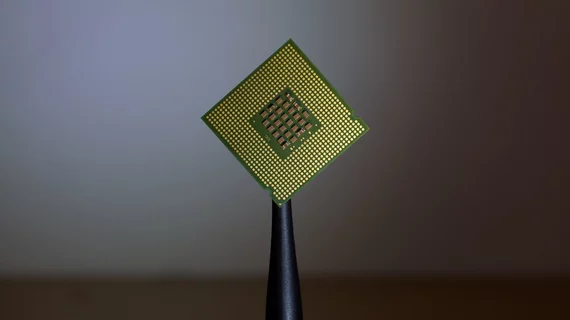Research team develops ‘world’s smallest ultrasound detector’
Researchers in Germany have developed a silicon-based ultrasound detector that is 10,000 times smaller than the piezoelectric crystal transducers presently used in clinical sonography.
Called the silicon waveguide-etalon detector, or SWED, the detector—which according to the researchers is the world’s smallest technology of its kind—is based on miniaturized photonic circuits atop a silicon chip. It can confine light in dimensions that can’t be seen by the human eye, enabling it to visualize features smaller than one millimeter in size.
The developers, from the Helmholz Zentrum Munchen and the Technical University of Munich, had their work published in Nature.
“This is the first time that a detector smaller than the size of a blood cell is used to detect ultrasound using the silicon photonics technology,” research team member Rami Shnaiderman says in a Helmholtz Zentrum news item.
SWED incorporates the same type of silicon photonics used by manufacturers to densely pack optical components onto small silicon chips. It measures 0.005 mm, or 100 times smaller than a human hair.
Shnaiderman notes that silicon, unlike piezoelectric crystals, is readily available and lends itself to mass production. The detector also does not present the size limitations of piezoelectric ultrasound, which has a minimal size for adequate sensitivity.
“If a piezoelectric detector was miniaturized to the scale of SWED, it would be 100 million times less sensitive,” Shnaiderman says.
SWED was originally developed for use in optoacoustic imaging, but the team has already identified other imaging and sensing applications for the technology, along with industrial uses.
Shnaiderman and his team plan to first test the device with optoacoustic imaging of cells and tissue microvascular structures, followed by ongoing refinements until the technology is ready for clinical use.
“We will continue to optimize every parameter of this technology—the sensitivity, the integration of SWED in large arrays, and its implementation in hand-held devices and endoscopes,” Shnaiderman concludes in his prepared remarks.
